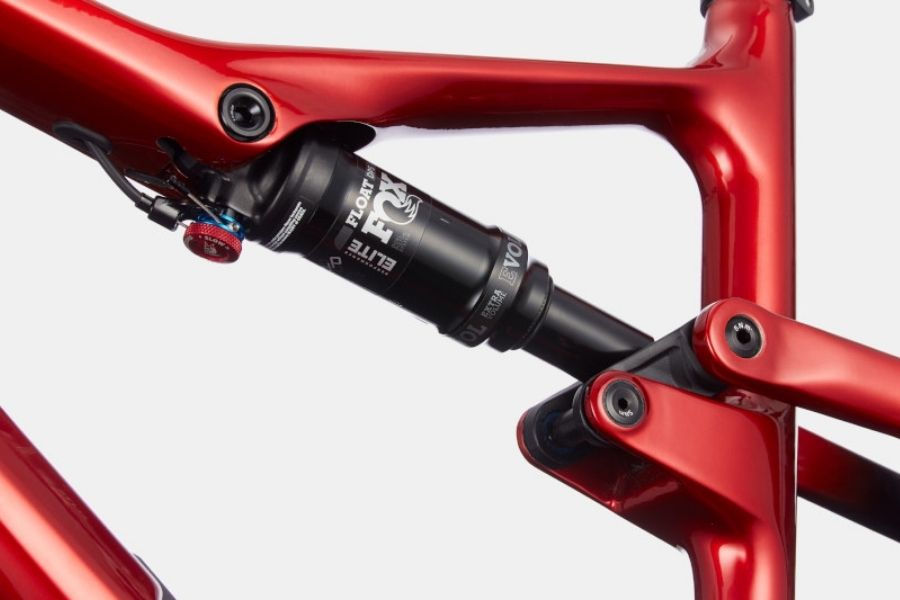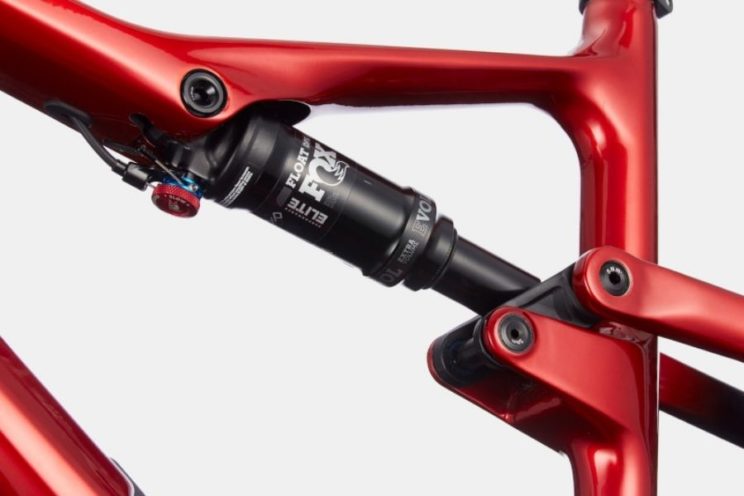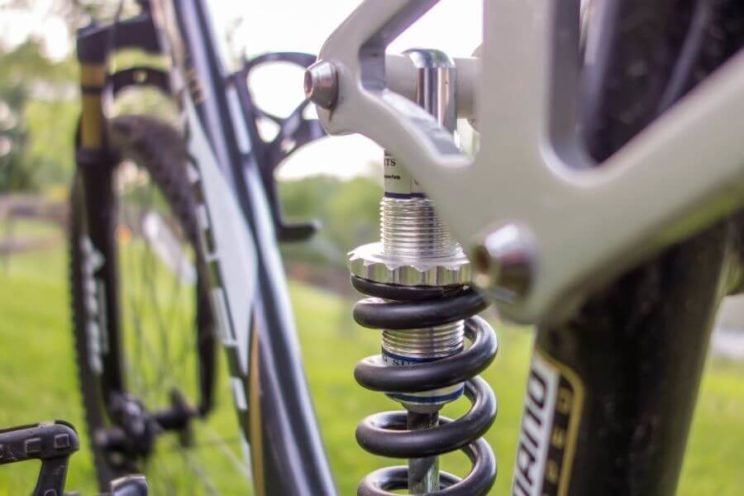Basic shock absorber adjustments
There are three types of basic adjustment to which you should pay special attention.1. Air pressure: SAG or prehundimiento
If you want your shock absorber to work properly, you must start by calibrating the pressure from your air chamber, adjusting it to your needs. The first thing you should do is buy a good bomb Specific for suspensions, if you still do not have one. With her, let's inflate The shock absorber and to regulate the Sag or prehundimiento. This is identified as the percentage of the career of the damping body (lower bar) that is introduced into the sleeve when compressing it with the weight of the cyclist and its equipment. Without exercising any other type of strength.
[IRP Posts = "4377" Name = "Five Basic Suspension Settings that you can do at home"]
With her, let's inflate The shock absorber and to regulate the Sag or prehundimiento. This is identified as the percentage of the career of the damping body (lower bar) that is introduced into the sleeve when compressing it with the weight of the cyclist and its equipment. Without exercising any other type of strength.
[IRP Posts = "4377" Name = "Five Basic Suspension Settings that you can do at home"]
Check, at least, once a month the air pressure of your shock absorber.Through this general guide you can have a starting point on which SAG is adequate according to the type of MTB or tours:
- XC (100 - 120 mm): 10 - 20%.
- Trail/All Mountain (120 - 150 mm): 20-30%.
- Enduro/Freeride (150 - 180 mm): 30 - 40%.
- DH: 30 - 40%.
2. rebound
The bouncing adjustment is carried out through a dial o Painted wheel, usually in red. It is located on the shock absorber sleeve and regulates its extension speed after receiving an impact. After adjusting the SAG, it is convenient to modify the rebound to your driving needs and type of land. Through the dial, which moves by clicks or small stops, you can have a fast rebound, which will better recover the route against potholes or small and adjacent obstacles, or slow rebound, for less irregular terrain, but with larger obstacles. Benefits A well calibrated rebound provides stability in the driving of the bicycle to irregular terrain. And, at the mechanical level, delays the wear of the internal cartridge and the joints or seals (components that prevent dirt from being sneak inside the shock absorber).3. Compression
Finally, you have to adjust the compression of the shock absorber, through a specific dial; Usually, blue. Supposes the adjustment contrary to rebound. That is, it regulates the speed at which the body of the shock absorber is compressed, while the rebound is responsible for extension. It can have two to twelve positions, depending on the model, including the total blocking position. Some specific shock absorbers for enduro or descent also have two dials to regulate the compression at low speed (from pedaling and small potholes) and at high speed (derived from large obstacles).
Benefits.
Having adequate compression to the surface type involves effectively filtering the irregularities of the terrain, mitigating vibrations and avoiding oscillations when pedaling. In this way, we take advantage of all the energy to move forward and pedaling is more efficient. It will also avoid stopping the route so as not to damage the internal mechanism of the cartridge or the seals.
Some specific shock absorbers for enduro or descent also have two dials to regulate the compression at low speed (from pedaling and small potholes) and at high speed (derived from large obstacles).
Benefits.
Having adequate compression to the surface type involves effectively filtering the irregularities of the terrain, mitigating vibrations and avoiding oscillations when pedaling. In this way, we take advantage of all the energy to move forward and pedaling is more efficient. It will also avoid stopping the route so as not to damage the internal mechanism of the cartridge or the seals.
Cleaning and lubrication
In addition to these three adjustments (pressure, rebound and compression), it is important keep the shock absorber. Use soap and water. With a dry cloth, rub both the sleeve and the body and its union, in addition to the dials and anchors to the tilting. Do it before and after each output. This will avoid the entry of dust, mud or water into the internal part of the shock absorber, something that can accelerate the wear of the joints or seals. Optionally, you can reduce friction and get softer and more precise, lubricating externally The body of the shock absorber. To do this, it always uses specific oil and lubricants for suspensions. Be sure to remove the surplus with a dry cloth.Cleaning and internal maintenance: when to perform them
So important or more than a frequent external cleaning, is to make the periodic maintenance of the shock absorber. Here we recommend doing it in a specialized workshop, although the big brands of suspensions (Fox, Rockshox, Mr. Suour) offer tutorials so you can do it yourself. If you dare, keep in mind that you will need specific tools: set of seals, joints, specific oil, rubber hammer, etc.📺 Here you have a Rockshox video to learn to do a good maintenance of the shock absorber. [Embed] https://www.youtube.com/watch?v=ngdHh8q2ZS4[/embed]
As a general rule, there will be a cleaning and replacement of seals once a year.The internal maintenance operation, which implies replacement for seals, lubricating oil and cartridge cleaning, should be carried out annually. But this period can be reduced depending on the frequency of use or type of shock absorber. In enduro and descent, for example, it should be done twice a year.
And dock shock absorbers?
In radical MTB modalities such as enduro or the decline, it is usual to see moun shock absorbers, instead of the air, much more widespread in the current assemblies. Settings, maintenance and cleaning are very similar to those of air, even simpler. In this case, the SAG does not fit with an air pump, but is calibrated by a nut that will compress more or less the dock, as well as compression or rebound. Likewise, dials allow controlling the entry and output of the hydraulic cartridge oil, in the most advanced models. In this way, both the speed and hardness of damping are adjusted.
Settings, maintenance and cleaning are very similar to those of air, even simpler. In this case, the SAG does not fit with an air pump, but is calibrated by a nut that will compress more or less the dock, as well as compression or rebound. Likewise, dials allow controlling the entry and output of the hydraulic cartridge oil, in the most advanced models. In this way, both the speed and hardness of damping are adjusted.































